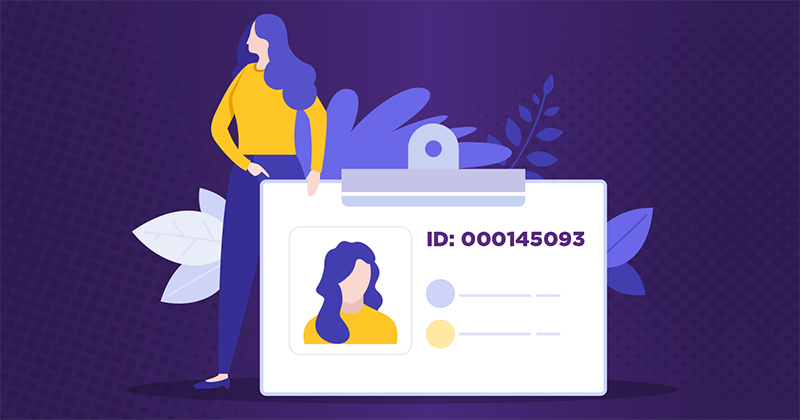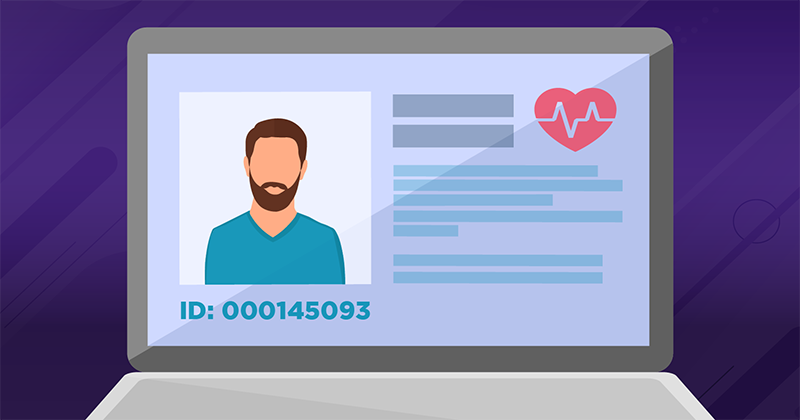The Value of a Single Patient ID for GI Practices and ASCs

How All-In-One Software Like gGastro® Can Help Prevent Patient Identification Issues and Streamline Processes
According to a 2016 survey, 68% of respondents said that the “inability to find a patient’s chart or medical record is among the errors that are very common in most healthcare facilities.”* While this report was done in 2016, many patient identification issues arose during the COVID-19 pandemic. In one extreme case, two patients were issued the wrong ID bracelet at a COVID-19 unit. One died, while another survived. Family members for each person received an incorrect update from the facility and were later informed of the misidentification.**
While groups like Patient ID Now and AHIMA are fighting for a national patient ID strategy to help prevent duplicate medical record entries and overlays, the software you use every day can act as a preventative tool, helping to combat patient ID issues that can happen at gastroenterology practices and ASCs.
All-in-one software systems, like gGastro, can work to help remove many of the patient identification issues that practices and ASCs with siloed databases and disconnected digital tools may encounter.
Wondering if patient identification issues are affecting your practice or ASC? Here are the questions to ask that help you zero in on possible issues:
Are Your Interfaces As Connected as You Think?
Multiple interfaces may seem like a good idea at first, especially if the price is right. However, your software and that extra third-party application are two separate entities — and it is common for developers to help facilitate the data exchange between two entities (such as an EHR and a practice management system) with a bridge. The connection isn’t always perfect, and the identifier for a patient could be different in each system.
Sometimes an algorithm or an actual person can match the two patient IDs and their corresponding records, but errors can occur. For example, if your EHR software is updated, but that vital connection to your practice management system isn’t, some information may not transfer over as it should.
With gGastro, whether you’re checking in a patient at your practice, documenting a surgery at the ASC, or sending out bills from either location, it all occurs in one patient chart, under one patient ID.
Are You Catching Errors During Registration?

According to the 2016 National Patient Misidentification Report, 63% of those surveyed said the primary cause of patient misidentification is “incorrect identification of patients at registration.”* For example, a single patient could be mistakenly associated with multiple medical records, each one only capturing part of the patient’s history — or their information could be overwritten by another patient’s data, creating one completely inaccurate record. Both are essentially data entry errors, which are completely preventable.
The gGastro suite pulls data from a single database, and its EHR, PM and endoscopy report writer are all natively connected. So if you’re searching for a patient who’s already part of the system, all you need to enter is a few pieces of information for a positive patient ID — no excessive searching, matching or logins necessary.
Lacking the Cohesiveness of a Singular Database?
You may have heard the saying that your tools are only as good as the data that powers them. This is especially true when you think about your tools for EHR, ERW, practice management and analytics. When all of these tools are natively connected and pulling data from one database, that is incredibly powerful for three reasons:
1. You can make connections between the clinical, operational and financial sides of your business, leading to informed, data-driven decisions.
2. A single database may help to prevent errors, as there is only one source of truth and one patient ID number to find, no matter which tool you’re using. Looking up a patient to schedule an appointment? Documenting a quick note from a visit or phone call? Trying to locate a bill and answer a billing question? There’s only one database to search, accessible by the digital tool of your choice, and one chart to update.
3. A single database may help speed up documentation if your system uses structured data. For example, if patients enter their demographic information on the registration kiosk, as we have for gGastro, the fields that have been filled in are fields that are common to many other documents related to the patient — procedure orders, bills, etc. The information only needs to be entered once, and it’s available across your software and, by extension, your business.
gGastro was created as a single system where your EHR, endoscopy report writer, practice management system, analytics, recalls and more were all built natively as part of one single platform. No matter which tool you use, there’s only one patient and patient ID to search for, in one database. This eliminates some of the manual work that busy GI professionals have to contend with on a daily basis, while potentially reducing data entry and errors that could have an adverse effect on patient care.
* Kelly Gooch, “Patient misidentification issues cost hospitals millions: 7 survey findings,” Beckers Hospital CFO Report, (2016 Dec. 16).
** Tracy Jones-Darnell, “Issues in Patient Identification During COVID-19,” Nursing, (2022 March) Volume 52, Issue 3, pp 38–40.
This blog is intended for informational purposes only and does not constitute legal or medical advice. Please consult with your legal counsel and other qualified advisors to ensure compliance with applicable laws, regulations, and standards.




